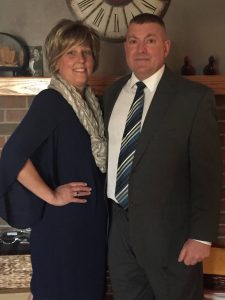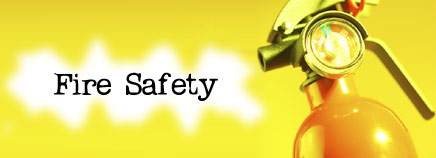A reminder of why we do what we do
-Excert from Dr. John Degarmo
RICHMOND — Elexis Webster was just 14 years old when she landed in foster care, after being discovered by police living in a car somewhere near Hayward.
She spent years homeless and impoverished and missed three grades. But this week, Elexis’ resilience and determination was on full display as she graduated third in her class with a 4.6 GPA from Kennedy High School in Richmond. She will attend UC San Diego in the fall.
It hardly seemed possible a few years ago. Elexis and her younger sister, Elyssa, often would search out places to sleep at night, sometimes in motel rooms, but also wherever they could find a spot — behind the Target store in Livermore, inside the baseball dugout in Hayward, or on park benches.
Unable to rely on parents for support, the two sisters were forced to be “little watchmen over each other,” said Millard Clay, her foster-mother who has taken care of Webster for nearly six years. She still recalls that when Elexis came into her foster home, “she was very, very sick” and “very nervous.”
“She was just shaking like a leaf on the tree. Anything would have her jumping,” Clay recalled.
Elexis, 19, didn’t go to school for three years from fifth through seventh grades, as she was often living on the streets.
“With Elexis’ incredible story, you’d never know if she didn’t tell you,” said Laura Shebroe, her Advanced Placement calculus teacher. “She’s very motivated to learn, and she’s not easily discouraged. But she is so willing to keep trying, even when she gets stuck on something.”
“I’ve never seen her in a bad mood,” Shebroe said. “And she is always smiling. She really has a genuine desire to be the best version of herself at all times.”
“She’s got a very playful sense of humor without being childish or immature,” added Ian Bader, her AP English teacher. “Elexis has this kind of radiance that doesn’t ever seem to diminish. It’s like she’s living every day like it’s her last, so there’s just a general feeling of warmth and joy that just comes off of her at all times … and an attitude of ‘why be negative?’”
But if you ask her about those days on the street, she’ll tell you: “Life was a nightmare.” She said she suffered from emotional and physical abuse at the hands of family members.
“It was terrible,” she said. “It was like a night terror. Only you wake up and you are stuck with it. …”
It took awhile for her to open up and trust her new home and situation, Elexis said. She was all too familiar with the expectation that whenever something good would happen, something or someone would mess that up.
When the chance came to return to school, she was determined to make the most of the opportunity.
“Most kids don’t like to learn, but I wanted to do it and missed it,” she said, explaining how she loved watching documentaries and reading, even though she was unable to do much of it when she was homeless.
But it was really her foster mom, Clay, whom she calls her “Mema,” who transformed her life, instilling in her a faith in God and herself.
“You don’t need to let your past dictate your future,” Clay would tell her.
She dreams of being a pharmaceutical chemist, focused on developing affordable drug cures for those struggling with immunological deficiencies, like herself.
Her foster mom had so much faith in her that she enrolled Elexis in the eighth grade, skipping over the three grades she missed, confident that she’d be able to make it up.
“I was so freaked out,” Elexis said of starting in eighth grade. “But she told me, ‘Run your teacher down if you don’t understand something. Don’t just sit there and say I don’t understand. Knock on that teacher’s door during lunch time or after school.’ And that’s what I did.”
She’d even show up for school on Saturdays, not because she was in trouble or had to make up work like many kids, but simply because it was a chance to ask her teachers more questions.
And she hopes more kids like her will get the second chance in life that she did.
“If it wasn’t for Mema, I wouldn’t be doing so good,” she said.
“Just having someone in the corner and someone who is for you and with you all the way, when you go on this journey, is the most important thing you need, so you don’t feel you are doing it on your own, ” she said.
Kansas News
Are you moving to a new home? Let TFI Kansas help!
TFI KS wants to remind all our homes of the process when foster families move to a new home. Each worker will be reviewing this process with each home at their monthly visit in June. It is very important to communicate with your worker as well as the child’s case management team prior to moving. It would be most helpful to have your worker come to your new home prior to the move so that he/she can ensure that the home meets DCF standards to license. Please review and if you have any questions please direct those to your assigned foster care worker. Thank you for your continued work with Kansas kids and families!
Once a Foster Family has provided the notice of their intent to move the home will be placed on hold for future placements and a move application must be completed. The Foster Care Worker will then submit the application packet, including the following documents, to DCF within 10 days of the move when there are children placed in the home:
- cover letter
- FCL 401 Family Foster Home Application
- FCL 002 Request for KBI/DCF Child Abuse Registry Check
- updated Foster Home Assessment
- FCL 653 Recommendation for Use by CPA and Intent to Place
- Floor Plan
- Family Foster Home Survey Instrument (entire survey)
- Certificates for MAPP/DT, First Aid, CPR (if required), Medication Administration and Universal Precautions
- Signed safety plans
- Notice of Survey Findings.
When the family does not have children placed in the home at the time of the move the home will be placed on hold status to prevent placements from being made until the home has been issued a license. The walk-through and move packet will be completed as soon as possible.
The Foster Care Worker and Foster Family will work together and ensure that any violations or corrections noted on the Notice of Survey Findings are addressed within 5 days of submission. DCF will issue a temporary license or permanent license depending on whether there are children placed in the home once this is successfully completed.
For families moving prior to their licensing renewal date the foster care worker will submit a Move Application packet in place of a renewal packet.

Annual Foster Care Retreat
September 9, 2017
8:00am – 4:00pm
Wichita, KS
Volunteer to assist with youth care while parents are in training. Fun activities are planned, and breakfast and lunch are provided!
Contest! If you bring a friend who has not volunteered before, you will be entered for a chance to win a $25 gift card!
Email swilhelm@tfifamily.org to sign up!
Upcoming Fundraising Event!
It’s Zumba Time!
3135 W Maple Wichita KS
Join us at the Flow Foundry Studio on Saturday July 29th, 10-11am
$20 Ticket includes entry, T-shirt, and refreshments!
Purchase tickets here!
Tee Off Fore Children Golf Classic!
A Benefit Tournament supporting The Scotty D. Memorial Foundation and TFI Kids Fund
September 22, 2017
Shawnee County Country Club
Topeka, KS
$75 per player
*Also a volunteer opportunity 🙂

Kansas Care Providers of the Month

Brad and Jennifer Stallbaumer have been foster parents since 2013 and during that time, they have taken high needs teen placements. In the past, Brad and Jennifer have been a support system to children who needed hospitalization but have never given up. Jennifer participated in family therapy with a teen girl who was no longer in her home. She and Brad are advocates to keep siblings together and have initiated sibling visits to maintain that bond.
Jennifer and Brad continue to provide the best care to all children placed in her home, including supporting a foster child in her home when the child’s mother was dying from cancer. Jennifer gathered all of this child’s supports in anticipation of the child’s needs. Jennifer maintained contact with this child daily and her doctors while she was obtaining treatment to process her mother’s death. The child was in a psychiatric hospital during the time of her mother’s funeral; however, Brad represented this child and his family by attending the funeral.
Brad and Jennifer have gone above and beyond in helping with respites. They always had a bed and a home for children who needed to take a break or are between placements. They have rarely said no, and whatever behaviors that child brings they deal with it in a positive attitude. They include their foster children in every aspect of their lives, they make sure they have a positive educational experience. When they go on vacation, if a placement has a sibling, they take the sibling, too. Brad and Jennifer are the epitome of the original model or concept of being foster parents. They do what is expected of any parent rather a biological or substitute parent. They are true parents to all children.
Between Families Recruitment Moment
Have we lost our mind ? Maybe!
Starting July 1st TFI will have a new Ambassador Program.
To become eligible to be a TFI Ambassador the following objectives must be achieved:
*The Foster Home must be a currently certified / licensed Foster Home and in good standing
*The Foster Family must have made a referral to TFI starting January 1, 2017 which became certified / licensed sometime during the 2017 calendar year.
Once the family has made one Foster Family Referral which has resulted in certification / licensure with TFI the family will have achieved Ambassador Status. The family will receive the $500 referral incentive associated with the referred family and receive a membership card stating they are an active TFI Foster Home Ambassador.
The Foster Home Ambassador Program will have the following levels within the program:
Silver, Gold, Diamond, and Platinum
To achieve the above status in the Foster Home Ambassador Program the following criteria must be met:
Silver: Must have referred at least one family to TFI who has become a certified / licensed home with TFI. This referral must have been on or after January 1st, 2017.
Gold: Must have referred at least three potential families to TFI who have become certified / licensed home with TFI. These referrals must have been on or after January 1st, 2017
Diamond: Must have referred at least five potential families to TFI who have become certified / licensed home with TFI. These referrals must have been on or after January 1st, 2017
Platinum: Must have referred at least seven potential families to TFI who have become certified / licensed home with TFI. These referrals must have been on or after January 1st, 2017.
The families will receive the following rewards / bonuses associated with the level of the program they have achieved:
Silver: $500 referral incentive for every family referral to TFI that becomes licensed / certified, a TFI T-shirt for each Foster Parent that is in the foster home, and 1 entry into the $1,000 gift card at the end of the calendar year for one lucky Ambassador.
Gold: $500 referral incentive for every family referral to TFI that becomes licensed / certified, $50 gift card to a restaurant of their choice, 3 entries into the $1,000 gift card drawing at the end of the calendar year for one lucky Ambassador.
Diamond: $550 referral incentive for each family after their 5th referral who becomes a licensed / certified TFI Home, $100 gift card to a restaurant of their choice, 5 entries into the $1,000 gift card drawing at the end of the calendar year for one lucky Ambassador.
Platinum: $600 referral incentive for each family after their seventh referral who becomes a licensed / certified TFI home, $150 gift card to a restaurant of their choice, 7 entries into the $1,000 gift card drawing at the end of the calendar year for one lucky Ambassador.
These levels will be on going and will not start over each calendar year. For instance, once a family has achieved their Silver status, they will remain on that status until they move up to the gold status or their home is closed and they are no longer a TFI Foster Home.

Oklahoma News
Summertime Water Safety: Please let your worker know if you have added a pool (even a wading pool) to your home. It is important that we review the Water Safety plan with you to remain in compliance.
3 Weeks with no placements: We have sign a renewal of our contract with DHS which requires us to administratively review every foster home who has no children placed with them for 3 weeks or more. Please expect that our Foster Care Workers may be contacting you more frequently to find out if there are any barriers to your taking another child.
Monthly contact: The new contract also requires us to have monthly in person contact with every foster home with children placed in their home for any period of the month. For homes that have had no children placed in the month, a phone contact must occur. A quarterly in person in home visit must occur when no children are placed.
Foster parent mentors are needed for new homes. We are looking for any foster parents who would be willing to mentor our new foster homes. If you are interested in supporting a family through the approval process and the first year of being a foster parent, please let your worker know.
Connections Compliment

Foster Parent of the Month! Laura and Larry Cardenaz!
Laura and Larry Cardenaz have been fostering for almost 3 years and have fostered 25 children, and their not stopping there!
Laura and Larry’s two adult children step in whenever they can to provide extra support.
The Cardenaz family lead by example and are always willing to keep children connected to their birth family. Children who reunify with birth parents are still calling the Cardenaz family to keep in touch! This shows that bridging the gap with birth families can be successful and it’s beneficial to children.
Thank you!

Annual Foster Care Retreat
September 9, 2017
8:00am – 4:00pm
Norman OK
Volunteer to assist with youth care while parents are in training. Fun activities are planned, and breakfast and lunch are provided!
Contest! If you bring a friend who has not volunteered before, you will be entered for a chance to win a $25 gift card!
Texas News

Water Safety Reminders and Policy
As we approach the peak swimming season, we want to remind you of the water safety policies for foster families in Texas. Be sure to notify your worker if you have a wading pool, new swimming pool, or other body of water added to your home:
Policy:
Foster/adopt parents must use prudent judgment and ensure children in care are protected from unsupervised access to water, such as pools, hot tubs, fountains, ponds, creeks, lakes and other bodies of water. If children are allowed to swim in other bodies of water, the supervising adult must clearly designate swimming areas. Rules governing the activity and dangers of water must be explained to participants in a manner clearly understood prior to participation in the activity.
Requirements for maintaining a pool at a foster/adopt home include:
- The foster/adopt parents must inform children about house rules for use of the pool and appropriate safety precautions. Adult supervision and monitoring of safety features must be adequate to protect children from unsupervised access to the pool.
- The swimming pool must be built and maintained according to the standards of the Department of State Health Services and any other applicable state or local regulations.
- A fence or wall that is at least four feet high must enclose the pool area. The fence must be well constructed and be installed completely around the pool area. Caregivers must continue to prevent children’s unsupervised access to the pool.
- Fence gates leading to the outdoor pool area must be self-closing and self-latching. Gates must be locked when the pool is not in use. Keys to open the gate must not be accessible to children under the age of 16 years old or children receiving treatment services.
- Doors that lead from the home to the pool area must have a lock that only adults or children over 10 years old can reach. The lock must be completely out of the reach of children younger than 10 years old.
- Furniture, equipment, or large materials must not be close enough to the pool area for a child to use them to scale the fence or release a lock.
- At least two life-saving devices must be available, such as a reach pole, backboard, buoy, or a safety throw bag with a brightly colored buoyant rope or throw line. One additional life-saving device must be available for each 2,000 square feet of water surface, so a pool of 2,000 square feet would require three life saving devices.
- Drain grates must be in place, in good repair, and capable of being removed only with tools.
- Caregivers must be able to clearly see all parts of the swimming area when supervising activity in the area.
- The bottom of the pool must be visible at all times.
- Pool covers must be completely removed prior to pool use.
- An adult must be present who is able to immediately turn off the pump and filtering system when any child is in the pool.
- Pool chemicals and pumps must be inaccessible to all children.
- Machinery rooms must be locked to keep children out.
- An above ground pool must:
- Be inaccessible to children under the age of 16 years old or children receiving treatment services when it is not in use; and
- Meet all other requirements in this rule except for subsections 3, 4, and 5 of this section.
- A pool cover does not substitute for any of the requirements in this rule.
Requirements caregivers must meet for children regarding body of water:
- Caregivers must use prudent judgment and ensure children in your care are protected from unsupervised access to water such as a swimming pool, hot tub, fountain, pond, lake, creek or other bodies of water.
- If children are allowed to swim in a body of water such as a river, creek, pond, or lake, the supervising adult must clearly designate swimming areas.
- Rules governing the activity and the dangers of the body of water must be explained to participants in a manner that is clearly understood prior to their participation.
During swimming activities at least one adult counted in swimming ratio must be able to swim, carry out a water rescue and be prepared to do so in an emergency. In addition to meeting the ratio requirements listed, if four or more children are engaged in swimming activities, there must be at least two adults to supervise the children. When a child who is non-ambulatory or who is subject to seizures is engaged in swimming activities, you mist assign one adult to that child. This adult must be in addition to the lifeguard on duty. This is not required if a licensed physician writes an order stating the child is at low risk for seizures and special precautions are not required or that the child only needs to wear an approved life jacket where the children are swimming. A life guard who is supervising the area where the children are swimming, may be counted in the child/adult ratio. The ratios in the chart above do not include children over the age of 12 years old who are proficient swimmers. However you must still comply with the child/caregiver ratios required if children are on an unsupervised swimming activity.
Adult volunteers or relatives may substitute for foster/adopt parents in swimming child/adult ratio if children in care are maintained in general foster/adopt care ratios, other foster/adopt children do not supervise water activities and compliance with supervision and discipline is provided by the foster/adopt parent with these substitute care providers.
Foster/adopt children must wear life jackets while participating in boating activities, if the child is in more than two feet of water and doesn’t know how to swim or if ordered by a physician for a child with a medical problem or disability.
Wading/splashing pools (less than two feet of water) must be stored out of the reach of children when not in use, drained at least daily and stored so it does not hold water. Hot tubs must be enclosed as required of swimming pools and covered with a locking cover when not in use.
If there is a body of water on or adjacent and accessible to the premises of the foster/adopt home, the Foster Care Worker must document such including the type, location, size and barriers between the foster/adopt home and body of water.

20 Years
William and Nancy Weigant
Ima Jean Johnson
10 Years
Russell and Linda Groenendyk
5 Years
James and Becky Wheeler
Jennie “Cooper” Wheeler
Marilynn Littlejohn
Jarrett and Shirine Peters
Jesse and Kara Larimore
Travis and Ashley Warstler
Robert and Tracy Harris
William and Stephanie Mitchell
Keith and Sheila Kroenke
Mark and Wendy Leenerts
Thomas (Ed) Horan
Jeffrey and Heather Martens
1 Year
Travis and Erika Hite (Pursley)
Josh and Leigh-Ana Howard
Jesse and Michele Saner
Dana Brakhage
Marlaina Masters
Melissa DeYoung
Reed and Angela Donaldson
Bradley and Mauralee Boersma
Bruce Jr. and Nicole Curry

Little boy playing and having fun outside in a park
Grants
TFI has the following grant funding available to assist foster children and foster families. Please speak with your foster care worker for more information:
Pritchett Trust: Funds available to foster children placed in Crawford County, KS for the purchase of musical instruments and music lessons.
Funds for clothing for Oklahoma foster youth placed in Comanche, Cotton, Jackson, Jefferson, Stephens and Tillman County.

Material adapted from: https://www.usfa.fema.gov/prevention/outreach/ and Americanredcross.org
Top Tips for Fire Safety
- Install smoke alarms on every level of your home, inside bedrooms and outside sleeping areas.
- Test smoke alarms every month. If they’re not working, change the batteries.
- Talk with all family members about a fire escape plan and practice the plan monthly.
- If a fire occurs in your home, GET OUT, STAY OUT and CALL FOR HELP. Never go back inside for anything or anyone.
Make an escape plan
It is important to have a plan when there are children in the home. Children sometimes need help getting out of the house, and they may not know how to escape or what to do unless an adult shows them.
- Have a plan for young children who cannot get outside by themselves. You will need to wake babies and very young children and help them get out. In your plan, talk about who will help each child get out safely.
- Know two ways out of every room. It is important to find two ways out of every room in the house, in case one exit is blocked or dangerous to use.
- Choose a meeting place outside the home. Children should know what to do when they hear a smoke alarm and there is no adult around. Help them practice going to the outside meeting place. Teach them to never go back inside a building that is on fire.
- Practice doing fire drills. Do fire drills monthly at different times of the day and different days of the month.
Keep children safe from fire and burns
Some children are curious about fire. There are simple steps you can take to keep you and the people you love safer from fire and burns.
- Keep children 3 feet away from anything that can get hot. Space heaters and stove-tops can cause terrible burns. Keep children at least 3 feet away from stoves, heaters or anything that gets hot.
- Keep smoking materials locked up in a high place. Never leave cigarette lighters or matches where children can reach them.
- Never play with lighters or matches when you are with your children. Children may try to do the same things they see you do.
The Rules for Fighting Fires
Just remember the three A’s
ACTIVATE the building alarm system or notify the fire department by calling 911. Or, have someone else do this for you.
ASSIST any persons in immediate danger, or those incapable on their own, to exit the building, without risk to yourself.
Only after these two are completed should you ATTEMPT to extinguish the fire.
Only fight a fire if:
- The fire is small and contained
- You are safe from toxic smoke
- You have a means of escape
- Your instincts tell you it’s OK
Fire Extinguisher Use
It is important to know the locations and the types of extinguishers in your home prior to actually using one.
Fire extinguishers can be heavy, so it’s a good idea to practice picking up and holding an extinguisher to get an idea of the weight and feel.
Take time to read the operating instructions and warnings found on the fire extinguisher label. Not all fire extinguishers look alike.
Practice releasing the discharge hose or horn and aiming it at the base of an imagined fire. Do not pull the pin or squeeze the lever. This will break the extinguisher seal and cause it to lose pressure.
When it is time to use the extinguisher on a fire, just remember PASS!
Pull the pin.
Aim the nozzle or hose at the base of the fire from the recommended safe distance.
Squeeze the operating lever to discharge the fire extinguishing agent.
Starting at the recommended distance, Sweep the nozzle or hose from side to side until the fire is out. Move forward or around the fire area as the fire diminishes. Watch the area in case of re-ignition.

